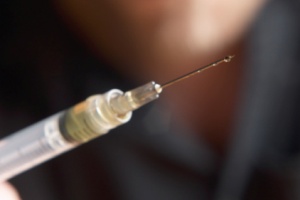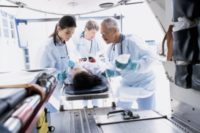 A new survey estimates that 320,000 U.S. health care workers sustain sharps injuries (SI) in hospital and non-hospital settings.
A new survey estimates that 320,000 U.S. health care workers sustain sharps injuries (SI) in hospital and non-hospital settings.
The survey by the Association of Occupational Health Professionals in Healthcare (AOHP) found an SI rate of 24 per 100 occupied beds, or 1.9 per 100 full-time equivalents (FTE.)
The AOHP surveyed its members to establish the first nationally representative blood exposure database and benchmark resource. The results of AOHP's inaugural 2011 EXPO-S.T.O.P. (EXPOsure Survey of Trends in Occupational Practice), the largest annual survey of its kind conducted in the United States, were released in the Fall 2013 edition of the AOHP Journal.
For the first time: benchmark rates
“Blood exposure among healthcare workers (HCW) is a serious occupational risk that healthcare facilities strive to reduce,” explains Linda Good, PhD, RN, COHN-S, Director, Employee Occupational Services, Scripps Health, San Diego, CA, and EXPO-S.T.O.P. co-author. “For the first time, we now have stick and splash exposure benchmark rates that represent the United States nationally.”
The survey, which will be conducted annually by AOHP, will provide results to help healthcare facilities enumerate and categorize blood exposures to better understand how they occur, how they can be reduced and what resources are required to achieve their reduction. The survey also identifies best practices in hospitals with low incidence rates of blood exposures.
A goal of zero
A statement by AOHP said the results show that the mandated use of safety engineered devices alone is not achieving reduction goals.
“This incidence of SI is significantly higher than in other contemporary surveys and shows that little reduction in SI rates has occurred in the last decade. AOHP is committed to reporting this information to compel healthcare facilities across the nation to identify new methods to protect HCW from blood exposures and to set the goal for blood exposures at zero.”



